Mississippi & Ohio River Cruising
By Ted Scull.
Why Go?
Mississippi & Ohio River Cruising: The Past into the Present
River cruises are now all the rage, from A for Amazon to Z for Zambezi and dozens of rivers in between.
Steaming back in time, the largest number of riverboats ever assembled, thousands of them, plied the Mississippi River and its major tributaries, including the Ohio, beginning at the dawn of steamboat travel in the mid-19th century. Decades later, trains, cars and planes put them out of business as passenger carriers, while freight traffic on the rivers remains hugely important.

The heyday of river travel and transport along the mighty Mississippi.
After WWII, passenger-carrying riverboat travel resurfaced and slowly grew in popularity as a cruise experience to where we now have three competing riverboat operators — American Cruise Lines, American Queen Voyages and French America Line — taking passengers into the American heartland to delve into history and observe firsthand today’s living down by the riverside.
Cruising Old Man River and its largest tributary, the Ohio, is a celebration of all things American — its diverse people, past and present occupations, the kaleidoscope of domestic architecture, arts and crafts, music and food, from Cajun to Scandinavian. And serenity.
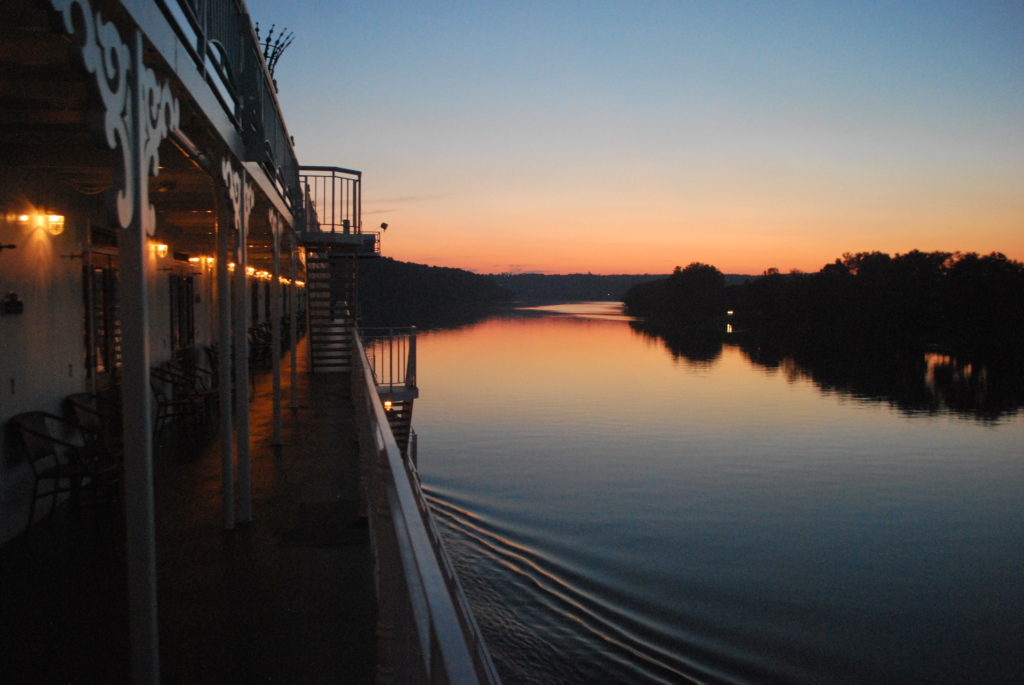
Evening. Serenity on the river. * Photo: Ted Scull
RELATED: Ted reviews the American Queen.
Which Stretch of River?
The Mississippi River is normally divided into the Lower River stretching from New Orleans, Louisiana, to St. Louis, Missouri, and the Upper River from St. Louis to St. Paul, Minnesota.
The Ohio River flows from Pittsburgh, Pennsylvania down to the confluence with the Mississippi, though most cruises do not cover its entire navigable length.
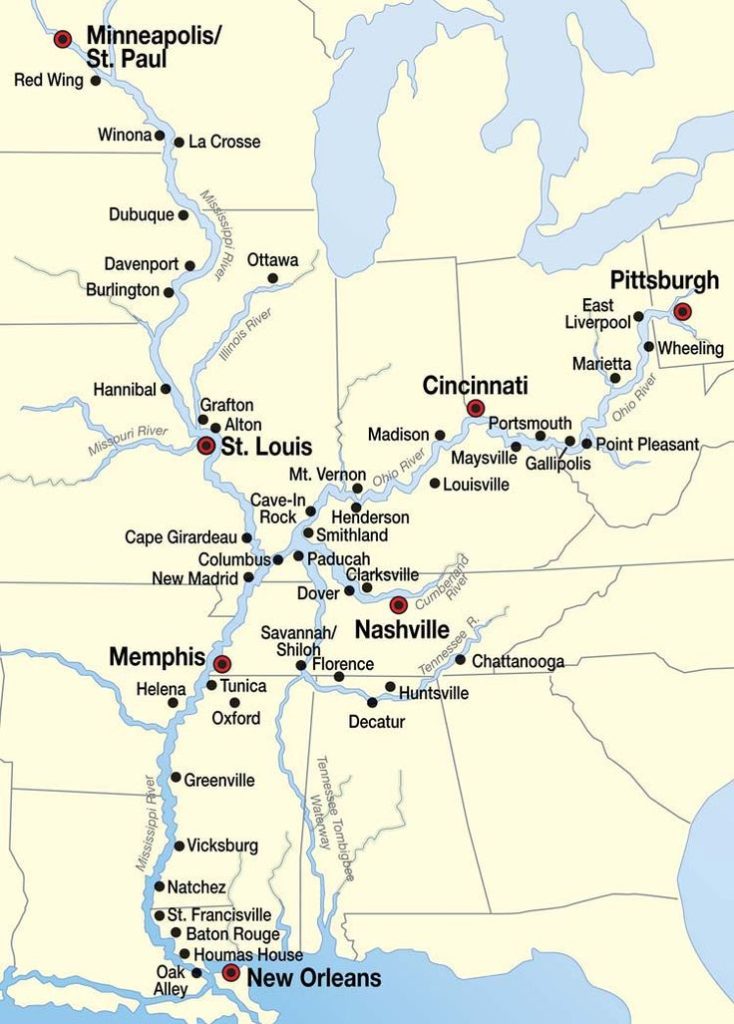
The mighty Mississippi & Ohio Rivers. * Photo: American Cruise Line
River Highlights
The Mississippi:
The Lower River elicits the most recognition dominated by the huge popularity of New Orleans as a destination. The French influence, Cajun and Creole, make it the perhaps the most distinct city in America, and all that is apparent in blues and jazz, creative food and the river city’s streetscapes.
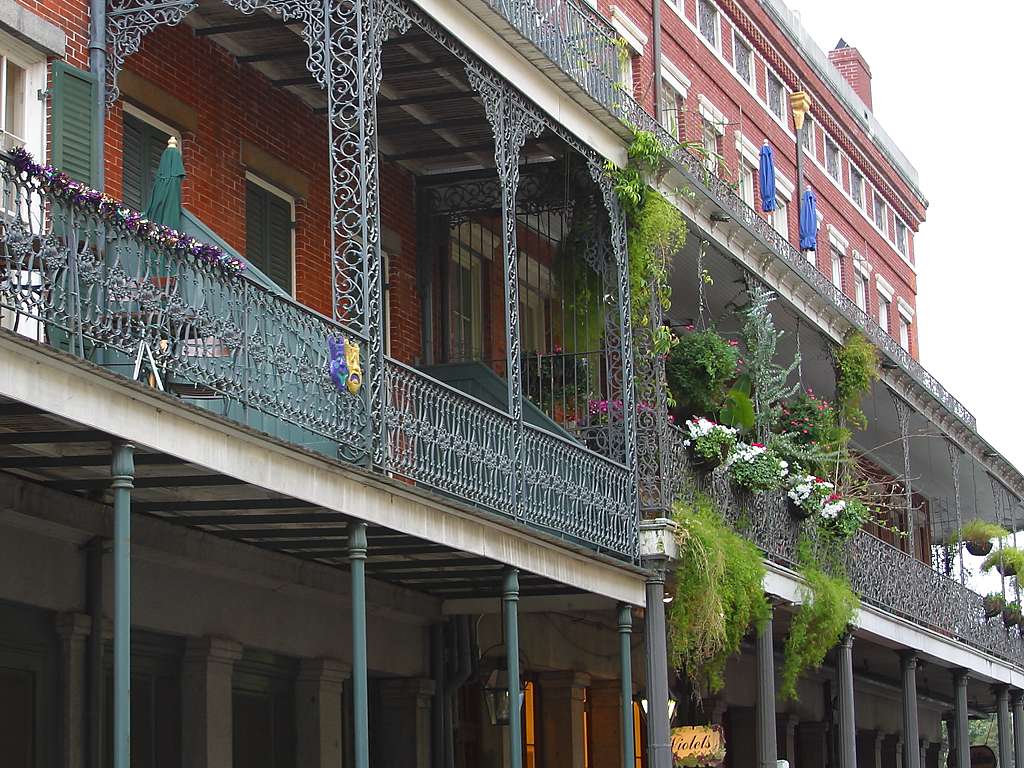
Streetscape New Orleans. * Photo: Public Domain Photos
A recurring theme in the Antebellum South is most prominently displayed in the fine old plantations homes, such as Nottoway and Oak Alley, spotted along the river and in the trading towns that developed during the era of Slavery and King Cotton. As the oldest city on the Mississippi, Natchez has more pre-Civil War mansions than any other, and St. Francisville, Louisiana has no less than 140 buildings on the National Register.
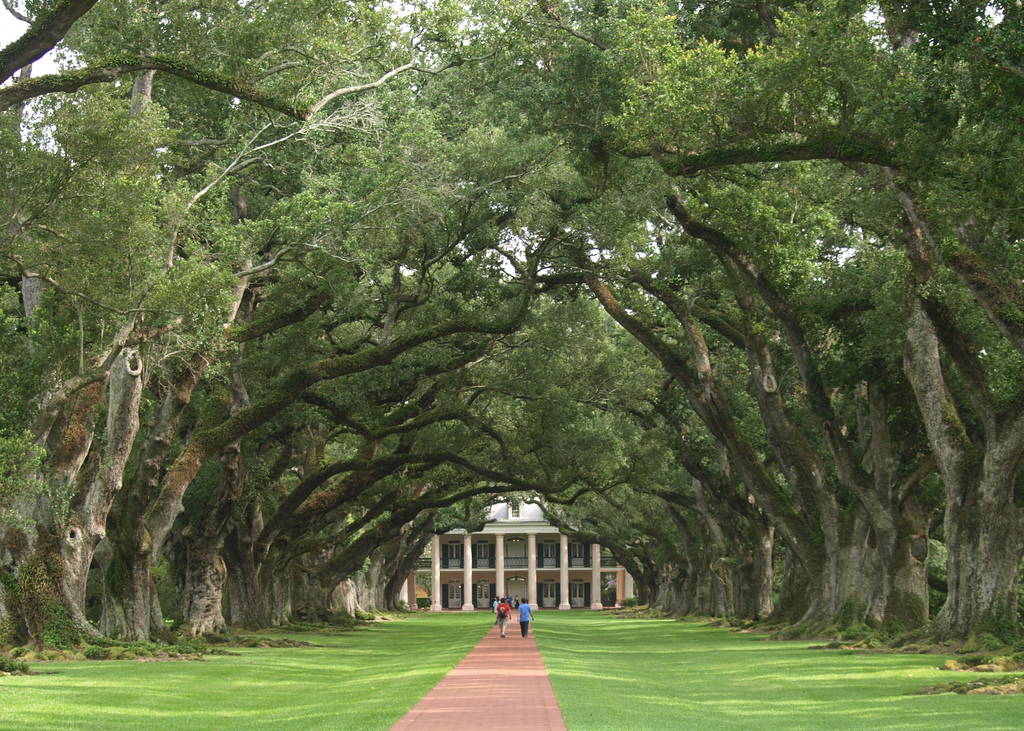
Oak Alley Plantation, site of several films and a fist-hand look into the Pre-Civil War Southland. * Photo: Oak Alley
The Civil War and its battles are a huge draw when stopping at Vicksburg as the Mississippi formed the main travel artery between the North and South.
One downside to mention are long stretches where high levees that hold back the river from flooding the land block long-range views. However, channeling and straightening has created a major commercial waterway for massive rafts of freight barges and tows, themselves points of interest.
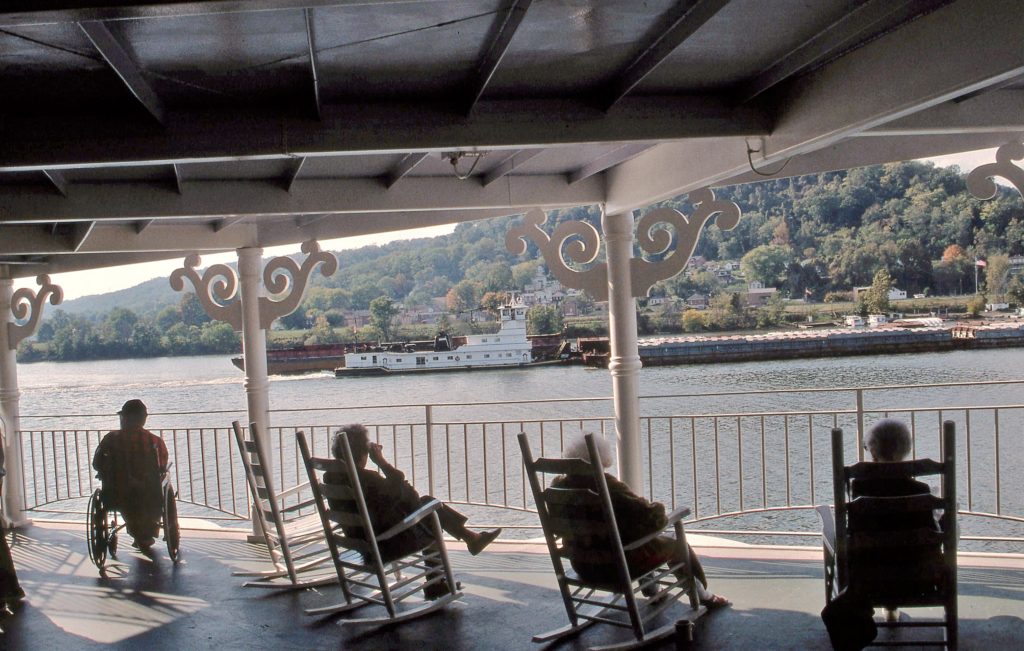
Watching the river traffic from a rocking chair. * Photo: Ted Scull
The Upper River elicits unexpected oohhs and aahhs for the beauty of the fringing countryside, the pretty riverside towns, and the high bluffs that one steams alongside. In autumn, colorful fall foliage rivals New England.
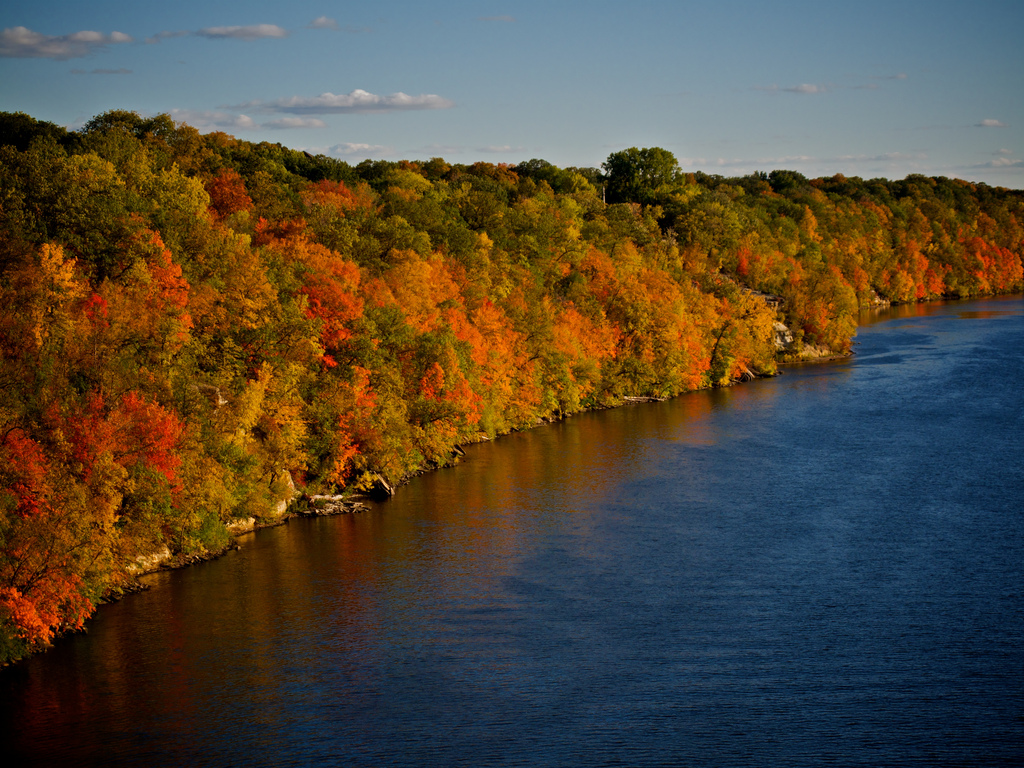
Taken from the Marshall-Lake bridge over the Mississippi River to the southeast.
Visiting Hannibal, Missouri provides real settings that appear in Mark Twain’s writing, and traveling the river, provides a first-hand better understanding of his descriptive tales of early piloting, the dangers that lurked, and life aboard all manner of craft.
Dubuque, Iowa boasts the world’s shortest and steepest railway dating from 1882. Red Wing, Minnesota thrived on the pottery trade as remembered in its comprehensive Pottery Museum.
Navigation locks tame the river’s otherwise more rapid flow and draw the locals to watch the traffic pass and to chat with those aboard the riverboats and barges.
The cruise ends at St. Paul with its big city attractions — art museums, stately homes, parks, a zoo, farmer’s market and neighborhoods.
The Ohio:
The Ohio River is navigable from Pittsburgh to its confluence with the Mississippi, and its rolling farmland beauty is timeless. However, no cruises cover the entire route.
Pittsburgh was sited where three rivers meet, the Allegheny and the Monongahela joining to form the Ohio. Walk to Fort Point where they meet. Ride one of the historic inclines and be rewarded with sweeping views over the Steel City.
Cincinnati feels more like an old steamboat town than any other because of its history, location, and plentiful river traffic. The prototype for the Brooklyn Bridge connects the city of seven hills to Kentucky. Art Deco Cincinnati Union Terminal hosts not only trains, but a museum complex in an impressive setting.
Marietta, Ohio developed a beautiful jogging and walking path along the riverfront and a footpath across the bridge to West Virginia for a view back to the city and your steamboat. The Ohio River Museum exhibits paintings, photographs, and models that show off the river’s history and displays the full-size sternwheel towboat, W. P. Snyder.
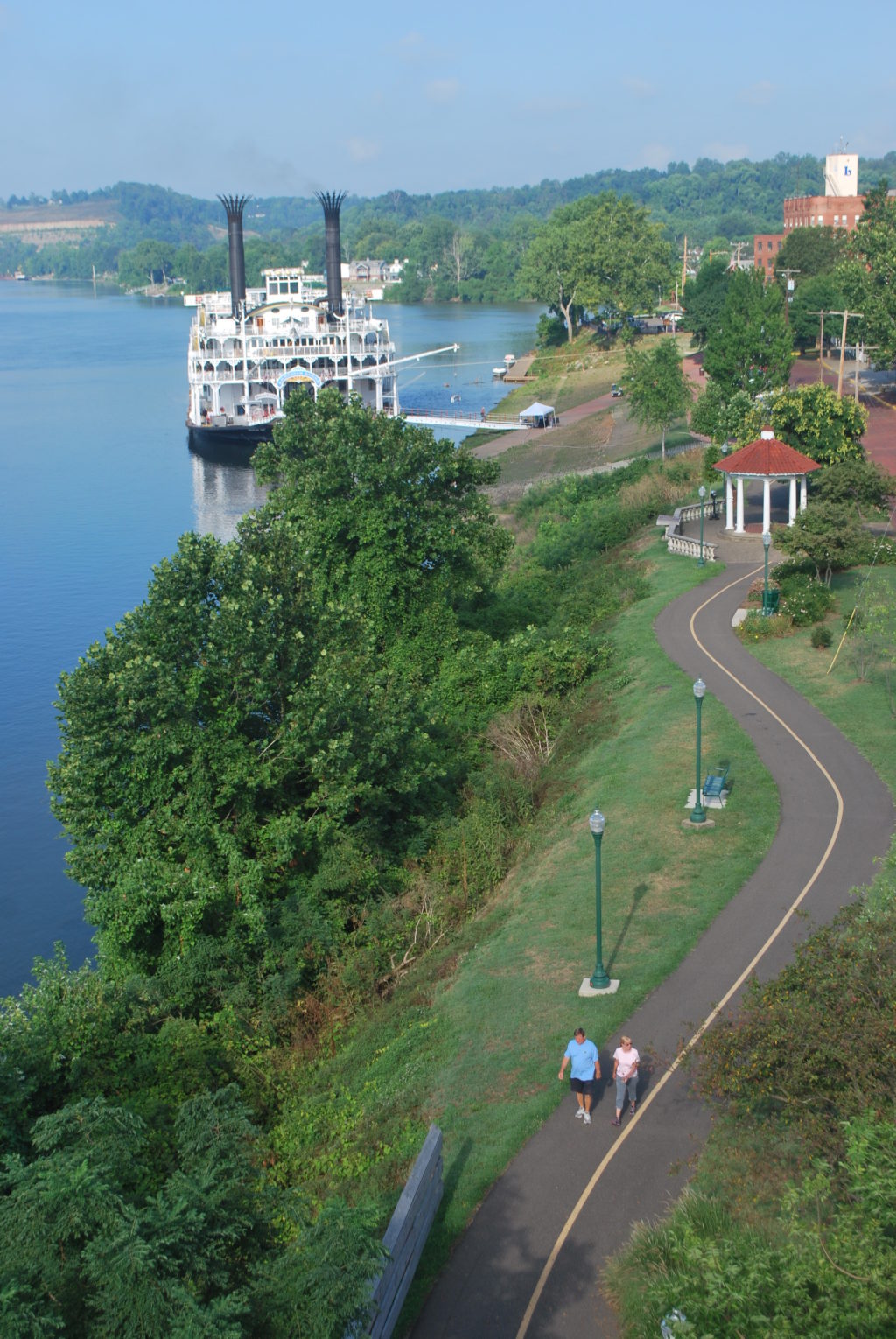
Strolling up the river while cruising down the river at Marietta, Ohio. * Photo: Ted Scull
Madison, Indiana’s downtown is the largest contiguous National Historic Landmark in the U.S., made up of 133 blocks that celebrate American commercial and residential architecture. Its thriving Main Street is quintessential Americana.
Landing at Maysville, Kentucky, you are greeted by huge murals painted on the floodwalls depicting the waterfront during the steamboat days, famous people who visited such as the Marquis de Lafayette, a French military officer who fought on the America side during the Revolution, or who were born here, such as singer Rosemary Clooney. She returned often and helped restored the town’s Russell Theater.
Paducah, Kentucky has similar style murals on its flood walls and the wonderful American Quilt Museum.
Which River to Choose?
If it’s better known Ante-Bellum South, plantations, the Civil War and New Orleans you prefer, then choose the Mississippi’s Lower River. The Upper and the Ohio are far more scenic and land you at small town America, each with its own charms, main street, museums and attractions that highlight their past.
When to Go?
While cruises operate year-round except in the dead of winter, the riverboats concentrate on the Lower Mississippi during the cooler months and migrate north during summer.
To Muddy the Waters
The Mississippi has additional navigable tributaries: the Cumberland and Tennessee to Chattanooga and Nashville, and the Illinois, almost all the way to Chicago. You who are river collectors might like to try them.

American Cruise Line’s QUEEN OF THE MISSISSIPPI * Photo: ACL
Don’t miss a post about small-ship cruising, subscribe to QuirkyCruise.com for monthly updates & special offers!
© This article is protected by copyright, no part may be reproduced by any process without written permission from the author. All Rights Reserved. QuirkyCruise.com.

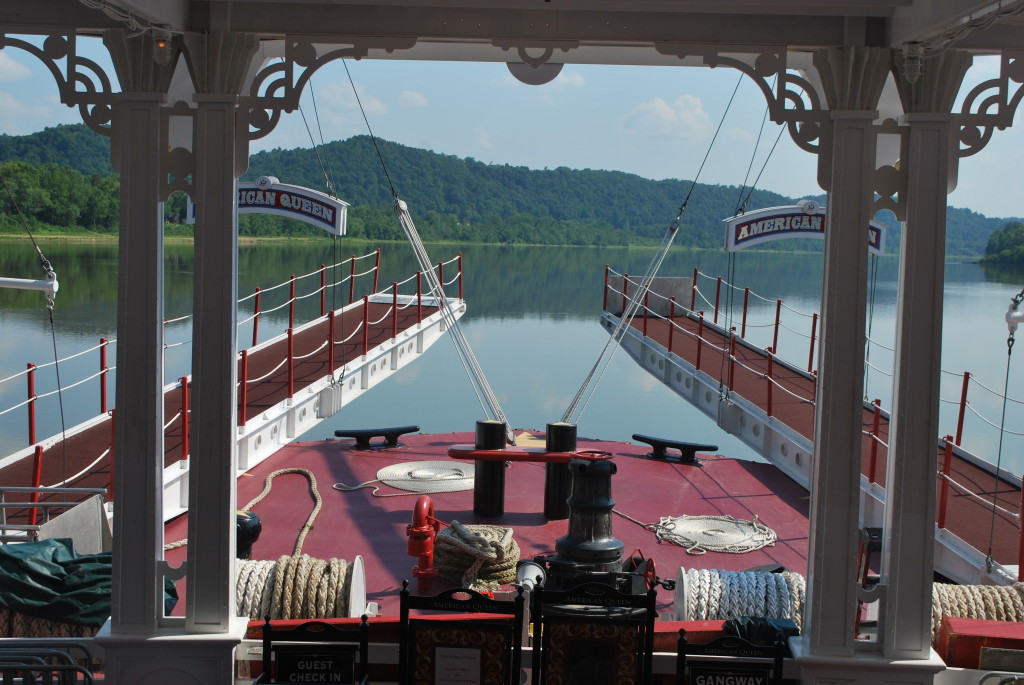
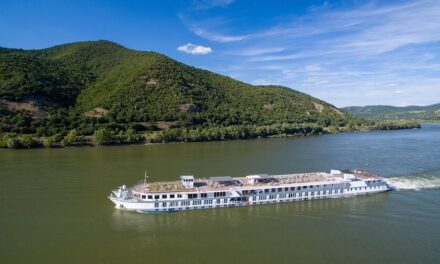


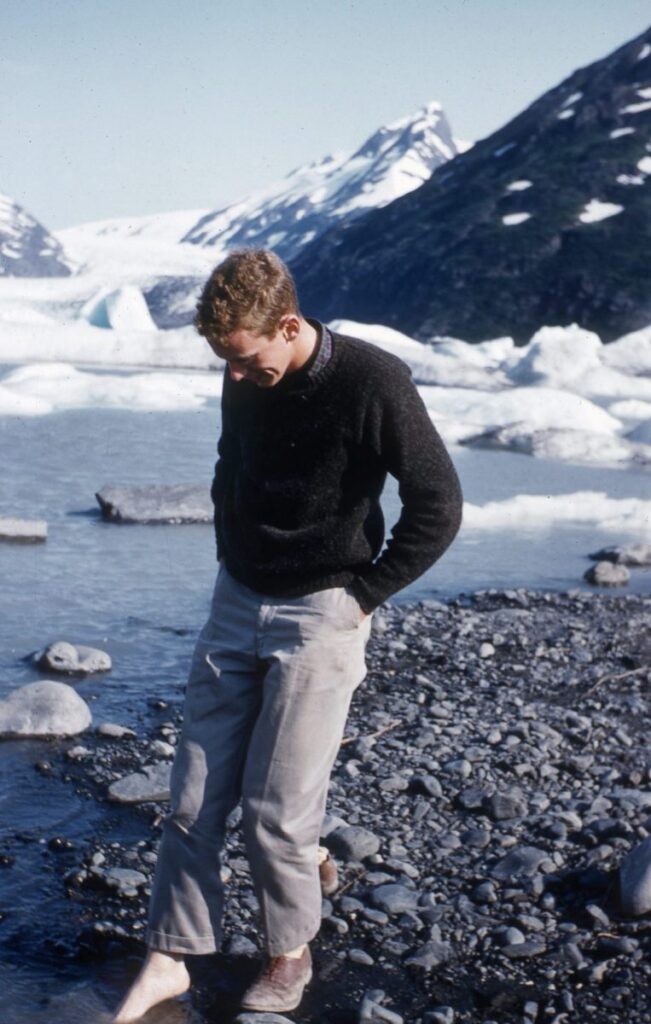








 HEIDI SARNA
HEIDI SARNA












Very useful!